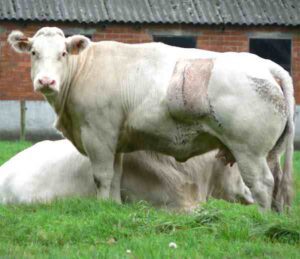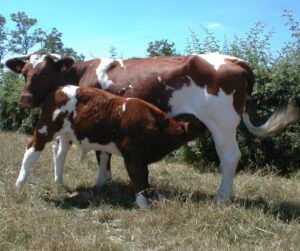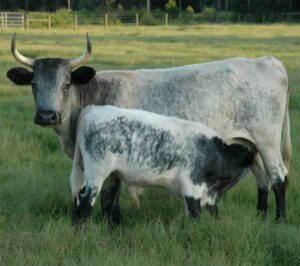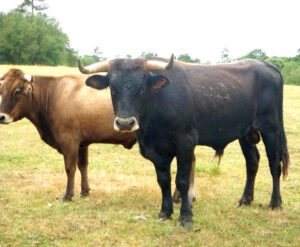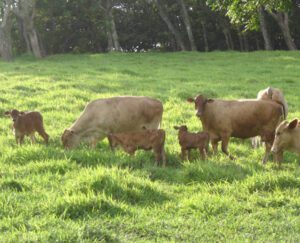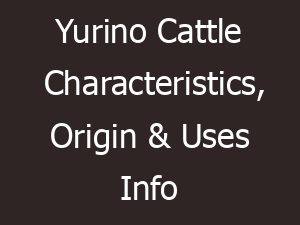The N’Dama cattle are a domestic breed of cattle from West Africa. They originated in the Guinea highlands, and are also found in southern Senegal, Mali, Liberia, Ivory Coast, Guinea-Bissau, Nigeria, Sierra Leone and the Gambia.
They were said to be the first cattle to be introduced to Africa by nomadic people via the land connection with Asia. And they have spread to the west and south of Egypt. The N’Dama cattle are trypanotolerant, allowing them to be kept in tsetse fly-infested areas.
The breed is also known by some other names such as N’Dama Petite (Senegal), Mandingo (Liberia), Boenca or Boyenca (Guinea-Bissau), Malinke, Futa, Fouta Malinke, Fouta Longhorn, Fouta Jallon etc.
N’Dama cattle were imported to the Caribbean Island of Saint Croix from Senegal in the 19th century, and later crossed with Red Poll cattle to form the Senepol cattle breed. Today the breed is used for both milk and meat production.
N’Dama Cattle Characteristics
The N’Dama cattle are a smaller sized animal with compact body. They are usually of fawn colored, but their coloration can vary from sand to black color and sometimes spotted.
They have short legs and their neck is thick and deep. Their back is fairly broad, well-fleshed and straight from withers to tail head. They have broad muzzle and a short and broad head.
Both bulls and cows usually have horns, and their horns are typically curve upward and outward or have a lyre-shape.
The N’Dama cattle have a poorly developed dewlap and the umbilical folds are also poorly developed. Average height of the cows is about 100 cm at shoulder, and about 120 cm for bulls.
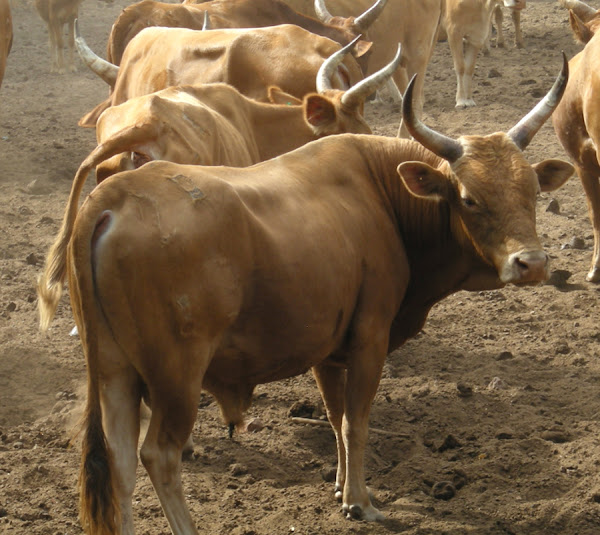
Average live body weight of the mature N’Dama cows vary between 250 and 330 kg. And average body weight of the bulls vary from 320 to 360 kg. Photo and info from Wikipedia.
Uses
N’Dama cattle are dual purpose animals. They are used for both milk and meat production.
Special Notes
The N’Dama cattle are a very hardy breed of cattle and are well adapted to stressful humid and dry tropical climates. They are known for their tolerance to trypanosomosis.
They are also highly resistant to tick-borne infections. The cows are not very good milk producers. They can produce only 2 to 3 liters of milk per day for a lactation period of 7 to 8 months. The breed is also very good for meat production.
And their meat has a very good flavor without much fat. Today there are approximately 7 million head of the N’Dama cattle available in West Africa. Review full breed profile of these animals in the following chart.
| Breed Name | N’Dama | |
| Other Names | N’Dama Petite (Senegal), Mandingo (Liberia), Boenca or Boyenca (Guinea-Bissau), Malinke, Futa, Fouta Malinke, Fouta Longhorn, Fouta Jallon etc. | |
| Breed Purpose | Milk and meat | |
| Special Notes | Strong, hardy, resistance to diseases | |
| Breed Size | Small | |
| Bulls | 320 to 360 kg | |
| Cows | 250 to 330 kg | |
| Climate Tolerance | All Climates | |
| Coat Color | Usually fawn, but can vary from sand to black and sometimes spotted | |
| Horned | Yes | |
| Milk Yield | Average | |
| Rarity | Common | |
| Country/Place of Origin | Guinea |
